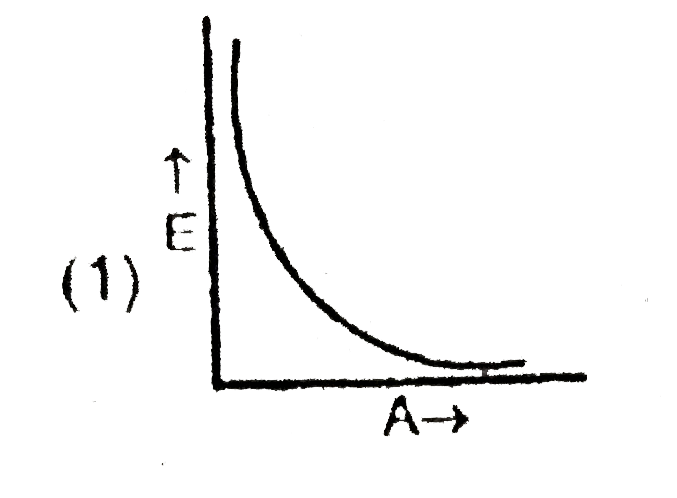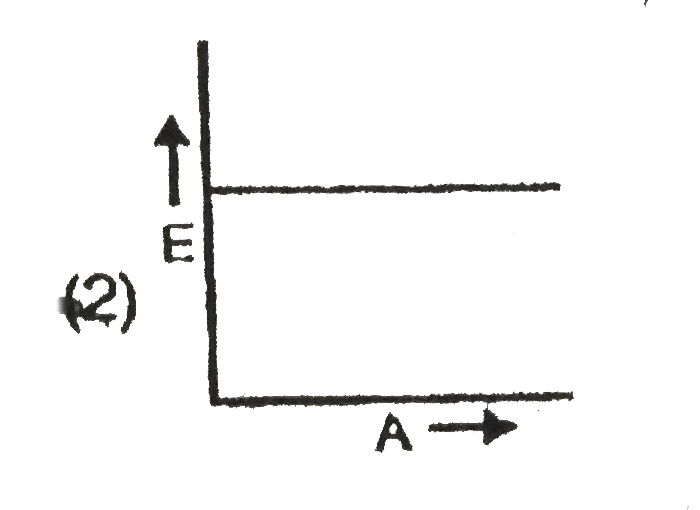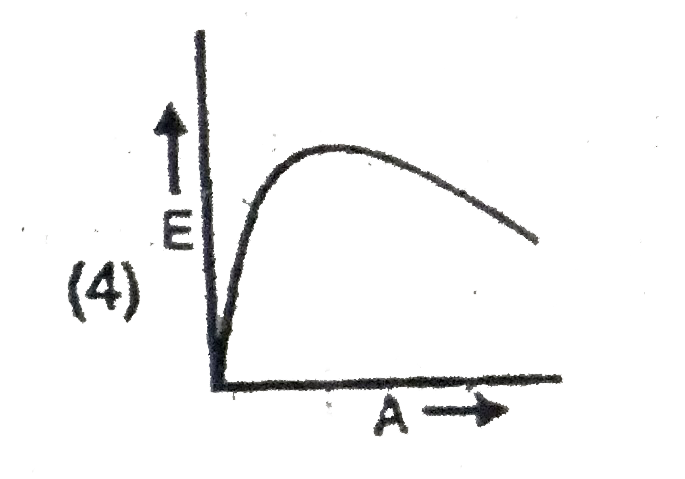Define 'binding energy'. Sketch the graph between binding energy per nucleon and mass number.
Step-by-Step Solution:
1. Definition of Binding Energy:
- Binding energy is defined as the energy required to hold the nucleons (protons and neutrons) together in the nucleus of an atom. It represents the stability of the nucleus; a higher binding energy indicates a more stable nucleus.
2. Understanding Nucleons:
- Nucleons are the particles found in the nucleus of an atom. They include protons (positively charged) and neutrons (neutral). The binding energy is the energy needed to overcome the forces that hold these nucleons together.
3. Graphing Binding Energy per Nucleon vs. Mass Number:
- To sketch the graph, we will plot binding energy per nucleon (on the y-axis) against mass number (on the x-axis).
- The mass number (A) represents the total number of protons and neutrons in the nucleus.
4. Key Points for the Graph:
- Start by marking the mass numbers on the x-axis. Common mass numbers to consider include:
- Hydrogen (A=1)
- Helium (A=4)
- Lithium (A=7)
- Beryllium (A=9)
- Carbon (A=12)
- Nitrogen (A=14)
- Oxygen (A=16)
- Iron (A=56)
- Lead (A=207)
- On the y-axis, mark the binding energy per nucleon values. Typical values are:
- Hydrogen: ~1 MeV
- Helium: ~7 MeV
- Carbon: ~7.5 MeV
- Iron: ~8.8 MeV
- Lead: ~7.2 MeV
5. Sketching the Graph:
- Begin plotting the points based on the mass number and corresponding binding energy per nucleon values.
- The graph typically shows a curve that rises to a peak around iron (A=56) and then starts to decline for heavier elements like lead.
6. Interpreting the Graph:
- The peak indicates that iron has one of the highest binding energies per nucleon, suggesting it is one of the most stable nuclei.
- The decline in binding energy per nucleon for heavier elements indicates that they are less stable and more prone to nuclear reactions.
- Binding energy is defined as the energy required to hold the nucleons (protons and neutrons) together in the nucleus of an atom. It represents the stability of the nucleus; a higher binding energy indicates a more stable nucleus.
- Nucleons are the particles found in the nucleus of an atom. They include protons (positively charged) and neutrons (neutral). The binding energy is the energy needed to overcome the forces that hold these nucleons together.
- To sketch the graph, we will plot binding energy per nucleon (on the y-axis) against mass number (on the x-axis).
- The mass number (A) represents the total number of protons and neutrons in the nucleus.
- Start by marking the mass numbers on the x-axis. Common mass numbers to consider include:
- Hydrogen (A=1)
- Helium (A=4)
- Lithium (A=7)
- Beryllium (A=9)
- Carbon (A=12)
- Nitrogen (A=14)
- Oxygen (A=16)
- Iron (A=56)
- Lead (A=207)
- On the y-axis, mark the binding energy per nucleon values. Typical values are:
- Hydrogen: ~1 MeV
- Helium: ~7 MeV
- Carbon: ~7.5 MeV
- Iron: ~8.8 MeV
- Lead: ~7.2 MeV
- Begin plotting the points based on the mass number and corresponding binding energy per nucleon values.
- The graph typically shows a curve that rises to a peak around iron (A=56) and then starts to decline for heavier elements like lead.
- The peak indicates that iron has one of the highest binding energies per nucleon, suggesting it is one of the most stable nuclei.
- The decline in binding energy per nucleon for heavier elements indicates that they are less stable and more prone to nuclear reactions.
Topper's Solved these Questions
- ATOMS AND NUCLEIBOOK - MBD -HARYANA BOARDCHAPTER - ATOMS AND NUCLEIEXERCISE - LONG ANSWER TYPE QUESTIONS
3 Videos
- ATOMS AND NUCLEIBOOK - MBD -HARYANA BOARDCHAPTER - ATOMS AND NUCLEIEXERCISE - OBJECTIVE TYPE QUESTIONS
23 Videos
- ATOMS AND NUCLEIBOOK - MBD -HARYANA BOARDCHAPTER - ATOMS AND NUCLEIEXERCISE - OBJECTIVE TYPE QUESTIONS
23 Videos
- BOARD QUESTION PAPER (SOLVED) - 2019BOOK - MBD -HARYANA BOARDCHAPTER - BOARD QUESTION PAPER (SOLVED) - 2019EXERCISE - LONG ANSWER TYPE QUESTIONS
4 Videos
Similar Questions
Knowledge Check
The graph between the binding energy per nucleon (E) and atomic mass number (A) is as-
A B
B C
C D
D
Binding energy per nucleon relation with mass number
Afirst decreases then increasesBfirst increases then decreasesCincreasesDdecreasesThe binding energy per nucleon is largest for
AO16BHe2CFe56DU238
The value of binding energy per nucleon is
View SolutionAs the mass number increase binding energy per nucleon :
View SolutionThe highest binding energy per nucleon will be for
View SolutionFor atomic nuclei, the binding energy per nucleon
View SolutionAverage binding energy per nucleon over a wide range is
View Solution
